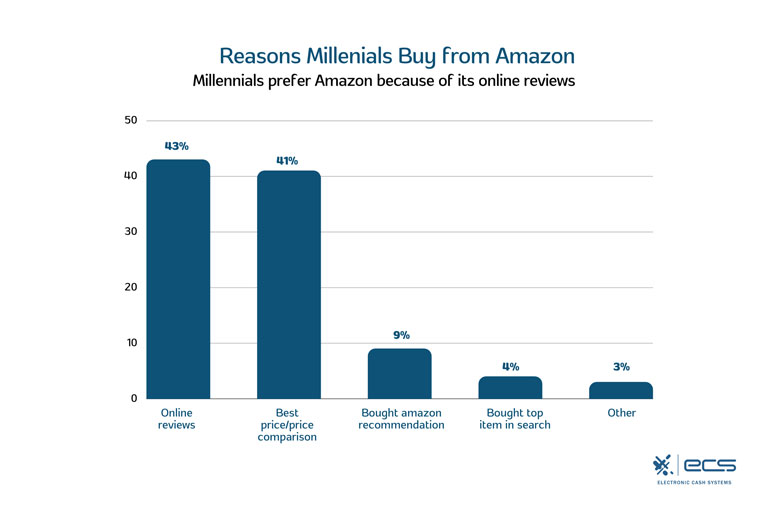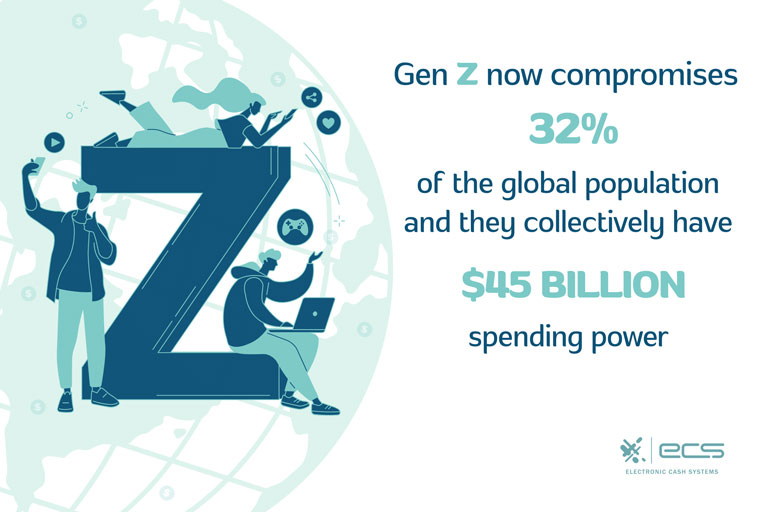With the New Year fast approaching, it’s time to wage war on the modern-day commerce battlefield. Sales trends change with the seasons and parallel advancements in technology.
It’s impossible to see into the future. So how do we project sales growth? The best solution is to look at the current trends of 2024 and leverage them for 2025.
I hope that this article will help you better understand your challenges and what trends you can cling to, to get a big W in your 2025 profits.
Merchant Challenges
Merchants will continue to face challenges to building a profitable business. Below are the top challenges merchants have experienced in 2024:
Consumer Expectations are Evolving
Today’s consumers have the highest expectations than ever before. They want custom tailored experiences, convenient shopping, and seamless interactions across various channels. Modern-day marketing and retail requires customer engagement through a variety of platforms, especially social media.
To meet these challenging expectations, merchants must adopt modern technology, while not making it too complicated for their customers. CRM systems and artificial intelligence (AI) can help retailers keep customer insights organized and gain a better understand their customer’s needs. Thus having the appropriate information to customize marketing materials and offer streamlined shopping experiences.
An Increase in E-commerce Competition
E-commerce expansions have heightened retail competition. Especially when it comes to major online brands capturing a significant portion of consumer attention. It has never been more critical to embrace e-commerce platforms and establish a powerful online presence. This involves investing time into designing user-friendly websites, optimized for mobile devices. Moreover, integration of your on and offline retail can help provide seamlessness, convenience, and flexibility.
Inflation And Global Tension
Businesses have been battling inflation rates for the last few years. Our current rates have settled to a 2.4% in Q4 of 2024. Though it’s decreased 1% from the beginning of the year, businesses are still playing catch up from the previous two years record breaking highs of 9.1% (June 2022) and in the 6%’s in 2023.
The cool-off is undoubtedly in preparation to November’s presidential election. Gotta make those numbers look good to sway votes, right? But this may not be enough considering the world wide global tensions escalating over the last few years as well. With Wars in Eastern Europe and the Middle East, and Cargo strikes in our ports, our 2024 economy is teetering and volatile.
Additional Trends to Incorporate For Higher Sales in 2025
1. Sell Based on Value
According to a recent study, almost 90% of growing businesses focus on selling to customers by promoting the value the product can bring. Not based on the cost or discount a customer would receive on an item. Most businesses experiencing negative growth are still using old sales tactics.
If there is one thing that is a turn-off for customers, it’s hard sells. Customers hate being pressured to buy because of the current “deals” or “sales”. It is no longer a winning strategy for sales.
Consumers want to know, “What’s in it for me?” Or “How can this make my life better?” Therefore, rather than a hard sell, the best way to win over a customer and receive that “yes”, is to focus on providing them with information on all the benefits your product or service offers them. Adding value to the sale will increase trust.

2. Boosting Sales with Artificial Intelligence (AI)
It might be shocking to find out that only 50% of sales reps meet their sales quotas. To combat sales hurdles, artificial intelligence (AI) software adoption is a must. In today’s market, AI can perform roughly 40% of sales tasks.
AI can:
- Boost productivity: AI can easily complete inferior tasks like setting appointments and taking notes. This provides more opportunities for sales reps to focus on nurturing their leads.
- Score leads: AI can determine which leads have a better chance of a conversion. Which saves ample time and resources.
- Develop marketing strategies: AI can gather valuable customer data that can later be used to develop sales-boosting marketing strategies.
- Create consumer suggestions: AI can offer suggestions to consumers based on their recent purchases.
- Project trends: AI can project industry sales trends so you are one step ahead of your competition.
- Enhance customer satisfaction: The seamless enhancements AI introduces to the sales process can lead to higher customer satisfaction and more conversion successes.
3. Catering to Customer Experience
One of the biggest sales strategies is catering to your customers. Creating a genuine and enjoyable experience for any in-person or online business can dramatically increase your sales.
80% of consumers say they base a positive experience on the convenience and speed of the purchase process. As well as the knowledgeability of the rep who assisted them.
Customers who have a personalized experience are more likely to do their business with you. Studies indicate that 49% of shoppers will make an impulse buy after experiencing a personalized shopping experience.
In fact, customers want a personalized experience. 60% of consumers say they feel comfortable giving their personal information if it will create a more personalized experience with your business.
You can create a personalized experience simply by providing live sales support or even offering online profiles on your store website. Making customers feel special is easier than you may think.

4. Advanced Training
Proper employee training is of the utmost importance. When businesses neglect this investment an inexperienced sales rep can severely damage your brand. It is crucial to invest in advanced training so you can develop the most qualified employees.
Research indicates that new sales reps need an average of 10 weeks of training to succeed in their role. However, a vast number of sales reps say they receive insufficient training time to be successful at their job.
Some studies are bold enough to proclaim that companies that spend time coaching and training new employees will see a 95% boost in revenue. Investing time in your employees will even provide you with a fresh pair of eyes and curious minds to provide fresh insight into how the company is run. Additionally, it minimizes unnecessary mistakes in the future.
5. Social Selling
Social selling is one of the easiest ways to gain conversions. It is informing customers about your products or services that have already expressed interest. This can come by way of referral or searching online or via social media.
Over the past 10 years, with the explosion of social media, sales tactics have drastically changed. Buyers want to be well informed on what they’re purchasing more than ever before.
Studies suggest that 94% of customers conduct personal research online before finalizing any purchases. When you are able to provide detailed information on your services and products to people who are already asking, you can give them a huge nudge to conversion.
In fact, around 31% of B2B professionals indicated that they have been able to build better relationships with their clients through social selling. Once you have successfully built a relationship and gained a conversion, you will be more likely to then experience more referrals. And the social cycle of interested and already trusting clients begins again, producing increased brand visibility and high-quality leads.

6. Outsourcing Sales
Another strategy to boost sales is to outsource your sales team. In fact, 80% of logistics leaders say it is no longer a question of whether to outsource or not. The question rather is how much of a business’s processes should be outsourced.
A dedicated sales team can focus on identifying leads, targeted marketing using different platforms, and converting more leads. The expertise that you will get from a dedicated sales force can also save your company time and overhead costs.

7. Integrating Customer Relationship Management (CRM)
Advanced Customer Relationship Management (CRM) can enhance sales techniques. In fact, 49% of top-performing sales teams have a CRM program as a part of their sales process. And with it, 91% of these sales reps meet their quotas. Overall, 65% of sales reps that do use a mobile CRM have a higher chance of meeting their sales quotas. Because of this, 91% of North American companies have an integrated CRM solution in their POS system.
CRM’s user-friendly format stores all pertinent lead or customer information. Including personal information and previous order histories. Therefore, sales reps are able to view important details when they are out on the field or speaking to potential customers. Allowing reps to be able to suggest additional products depending on an existing customer’s last purchase or demographic. In the end, the seamless sales process with CRM helps build customer relationships.
8. Targeting Millennials With Tech-Savvy Experiences
Millennials (born between 1981 – 1996) embrace technology quickly. Because this generation has grown with the age’s technological advancements. They are the most likely group of people to try any new techy feature your business offers.
There are about 82.2 million Millennials in the US alone. With the vast majority all using mobile phones. Some researchers say that because Millennials are so tech-savvy, they would prefer to do all their shopping exclusively from eCommerce stores.
According to recent studies, 68% of the Millennial generation is looking for more integrated shopping experiences. So, if you’re looking to target this people group, the best way to do so is to emphasize a seamless shopping experience with a focus on new technology.

9. Targeting Generation Z
Generation Z (born between 1997-2012) comprises 32% of the global population. With about 2.47 billion individuals—with $45 billion in spending power and an additional $600 billion of family money, Gen Z presents a valuable audience for merchants who have attractive products or services to a younger population.
With Gen Z representing such a large chunk of the population, businesses will lose out on sales potential if they do not properly market the younger generation.
In addition to the tech-savvy Millennial generation, Gen Zers are also heavy users in the digital world. With Instagram, YouTube, and TikTok being their main source of information, businesses can leverage these digital social platforms to target their audience. Following Younger Generations on socials can help merchants locate trending products to sell and add to their inventory. Merchants who are selling trending items can expect to see a spike in their sales and a continued generation of loyal customers.
Social media is no longer just used to post pretty pictures and funny videos. These popular online social outlets are now optimizing their platforms with shopping pages and brand profiles. Building a space for merchants to promote their products to sell online.
Gen Z and Millennials can find trending products with the simple search function. The higher the search volume for trending items, the easier it is to find the top trending products.

10. Omnichannel Sales
Omnichannel sales mean that a business uses multiple platforms as sales pipelines to market its products. All channels are unified, creating a seamless shopping experience. For example, a merchant could use sales channels such as their physical storefront, eCommerce store, Amazon, eBay, Instagram, or any other social media platform.
Omnichannel sales allow for the freedom to choose where and how customers want to search for and purchase your product or service. All the while getting the same service and quality from any platform.
Studies conclude that about 73% of shoppers will look at different channels while searching for a desired product. If a merchant can stay visible on all possible channels it gives your company a higher chance of a customer selecting you.
Businesses utilizing omnichannel sales retain 89% of their customers which puts them ahead of market competitors. This is because 55% of businesses do not offer an omnichannel shopping experience. Thus omnichannel merchants have higher consumer visibility.
11. Automating to Increase Efficiency
Here’s a fun fact. Sales agents spend a shockingly large amount of their time (64%) on menial, non-sales-related activities. Introducing sales automation to daily tasks, email responses, and minute procedures can really clear up a representative’s time to focus on nurturing client relationships and closing more deals.

12. Forward-Looking Analytics
Rather than relying on building manual insights on previous sales quarters, using analytics tools is crucial for sales agents to properly sort through and develop an effective forward-thinking strategy.
New analytics tools take out the guesswork of looking at the past to prepare for the future. Predictive analytics can effectively take trend data and guide sales with innovative approaches to new opportunities that a manual analysis may not have uncovered.
Currently, 75% of the fastest-growing companies are already using this new breed of analytics tools.
13. Integrate Marketing, Sales, and Support
Consider combining your marketing, sales, and support into one fully integrated machine. Combining the knowledge and power of these three departments will showcase your company as a well-oiled machine.
With the rising implementation of AI tools in sales, algorithms can target specific audiences, chatbots can assist with the purchase, and also offer support all in one online program. This personalization in the absence of a human presence offers an instantaneous resolution. Something today’s consumers are looking for.
In fact, studies indicated that 47% of consumers would choose to complete purchases through chatbots rather than waiting for a live representative. Moreover, 69% of those same consumers would prefer support from chatbots over human interaction. Simply due to the fact that bots offer more instant results.

14. Power of Consumer Reviews
In the past, sellers could easily turn on the heat and put pressure on buyers. Whether or not their claims are legitimate, they promote their products or services with the highest praise.
However, that is no longer the case. Customers are prone to doing their research prior to purchase commitment. One of the first places they start is looking at reviews on Google, Yelp, Amazon, and social media platforms such as Twitter and Instagram.
Whether you are selling on Amazon, in your Brick-and-mortar, or in your own online store, if a customer were to make the decision to buy a product or service, even after completing their due diligence, and was still unhappy with their purchase, they can easily leave a negative review. Impacting the merchant significantly.
Because of this, merchants need to get ahead of the game. Making sure they are putting out the best they can offer. That all their claims are valid and that their products and services exceed customers’ expectations. Nipping negative reviews in the bud.
Final Thoughts on Leveraging Sales Trends For 2025
Having a sufficient understanding of trending sales techniques can help better prepare your business for the future. If current 2023 trends show us anything, it’s all about keeping up with the latest technology, producing great products and services, and building trust with personal customer relationships. Leveraging these current trends can set you up for success when attempting to forecast the 2024 sales year.
To contact sales, click HERE. And to learn more about ECS Payment Processing visit Credit & Debit.
